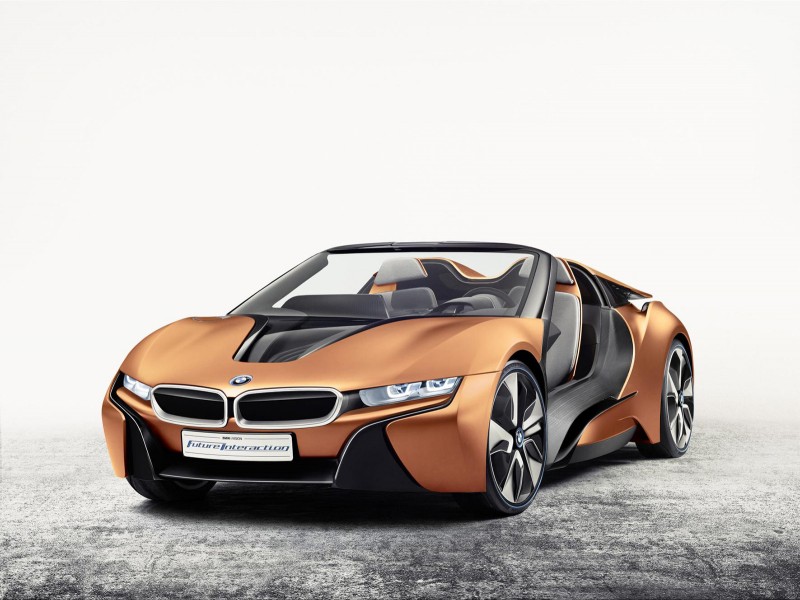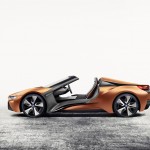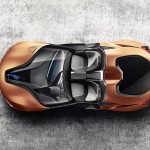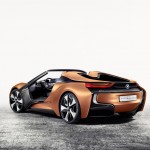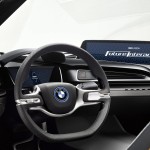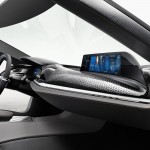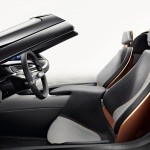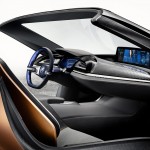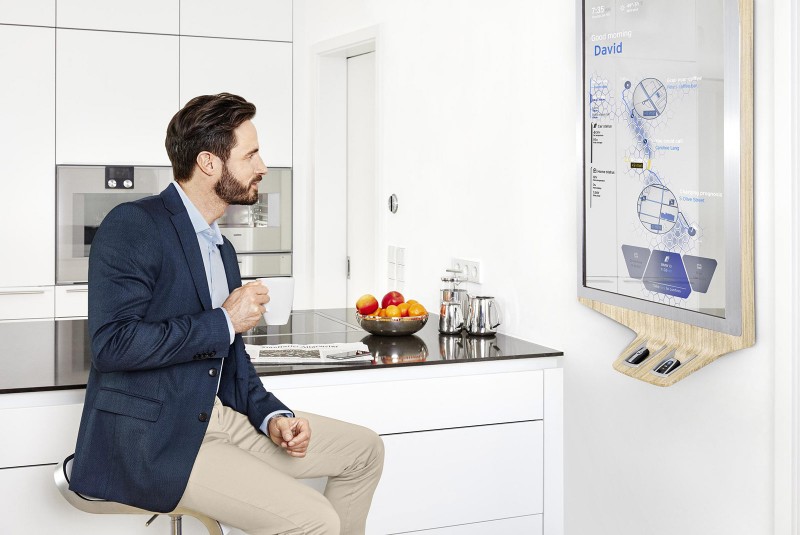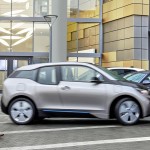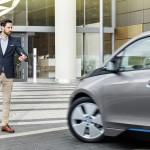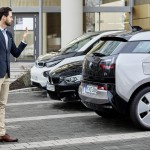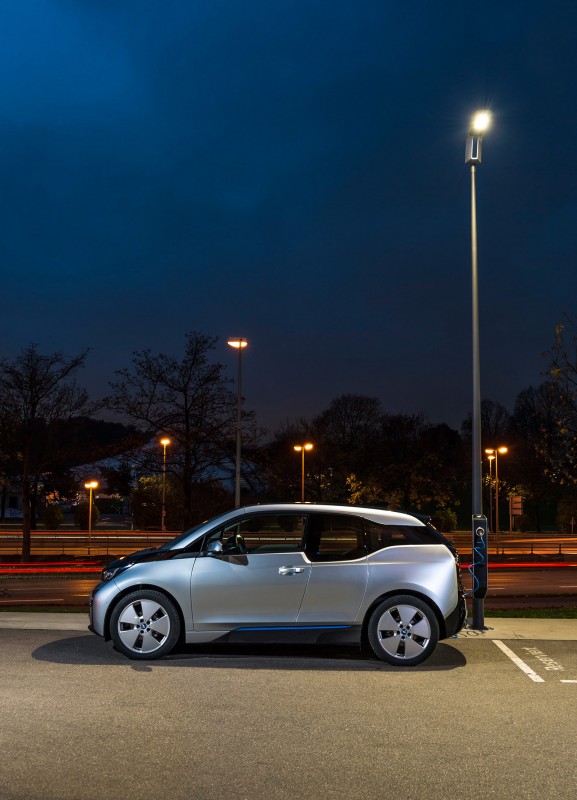BMW’s CES display shows the company’s vision of the future, and it’s a connected one. A wide variety of technology is on display at this year’s CES by the Bavarian automaker including a slinky roofless version of the BMW i8 plug-in hybrid sports car and much more.
The BMW i Vision Future Interaction Concept Car provides an outlook on the networked cockpit and BMW’s idea of the user interface of the future. Using high-resolution screens about the cabin, BMW’s idea is that these can be interacted with by either gesture, touch or voice control. Head-up display (HUD), instrument cluster with three-dimensional display and 21-inch panorama display complete the high-tech ambiance in the cabin.
As anticipated in our CES preview, BMW’s AirTouch technology takes care of gesture control within the car’s cabin. The sensors are able to recognise movements made with the hand and also depth movements too. This means that the panorama display can be operated like a touchscreen without having to actually touch the surface itself. The idea is to reduce the distraction time necessitated by having to glance at the screen to control a function. Instead, a simple swipe with your hand in the air can switch music track, answer a phone call or other useful feature.
Autonomous driving modes and how they will work in a practical situation have also been looked at, with BMW’s engineers aiming to reduce potential complexity involved in turning autonomous functions on or off. The solution is three drive modes – Pure Drive (driving yourself), Assist (assistance systems intervene actively) and Auto Mode (highly automated operation) – each selectable at the steering wheel.
The intelligent Open Mobility Cloud of the BMW Group connects networked systems such as a BMW i3 and a Smart Home with personal end devices like smart phone or smart watch. The Open Mobility Cloud networks the correct information and functions, and uses intelligent control to allow complex processes to be started automatically, without their being requested or having to be initiated with an app. Users are provided with predictive information relevant to them personally by networking with the Open Mobility Cloud. What that means in a nutshell is the future car and home will communicate autonomously to predict or learn behavioural patterns of their user and anticipate use.
In the home, a “Mobility Mirror,” which is a mirror and computer display at the same time, is a component of the Internet of Things and networked using the Open Mobility Cloud. Important daily information is shown in the Mobility Mirror display, such as personal calendar, mobility options, energy status of the smart home, charge status of the BMW i3 and even the weather forecast. Well, why not!
BMW has extended gesture control to beyond the cabin interface too, allowing owners to usher their car forwards or backwards into and out of parking spaces simply by waving at their car. The BMW i3 recognises these specific gestures and autonomously drives into and out of a parking space.
Been the victim of a car park donk? BMW’s Bumper Detect identifies whether the driver’s own vehicle being parked has been bumped and activates the cameras. The networked systems at the same time send a message to the driver’s smart phone, and images are sent if requested. Bumper Detect also recognises whether unauthorised persons are tampering with the vehicle and sends images to the networked mobile end devices, so you can act accordingly.
BMW has also been working on a new personal digital assistant (think Cortana or Siri) called BMW Connected. Currently in prototype stage, the system is aimed at meeting the needs and requirements for mobility of the future. BMW Connected is available all the time on all networked end devices: at home, on foot or on the move in the user’s own vehicle, or on public transport. The platform for BMW Connected is the Open Mobility Cloud with a highly flexible service architecture meaning the extent of controls possible will far outreach those of the vehicle alone. It has been designed as a learning platform and will become more focussed to an individual’s needs the more it is used.
Information relevant to the user is always provided at the right time. BMW Connected learns, for example, routes which are taken on a regular basis and proactively informs the user if any disruption is expected along the route. We’re not sure how this differs from similar offerings by Google, Apple and Microsoft to name but a few although in-car integration and the information being available across all cloud connected areas may prove useful. For example, a route may be planned in a coffee shop and already be on the car’s screen with traffic updates by the time you reach the door.
BMW’s clever light & charge solution, that has previously seen the light of day in the past, also offers a neat solution to charge point infrastructure installation by integrating a charge unit into a street lamp. Although the lamps should work with any plug-in car, the vehicle can only begin taking charge after either a smart phone app or RFID card is used. It’s a shame this model is still being followed where RFID cards are continuously being rolled out. It would be more sensible to adopt a payment or registration scheme using a contactless bank card in order to avoid hundreds of RFID cards needing to be carried.
BMW has also introduced a new mirrorless rear view system, akin to that seen in Volkswagen’s XL1. The system uses three cameras and covers larger viewing angles and eliminates dangerous blind spots that could otherwise be problematic if using a conventional mirror. The system is also “smart” and can recognise hazards and alert the driver accordingly.
For the i3, BMW has made an Extended Rearview Mirror, which links up mirror and camera technology. In the interior mirror, the mirror view is overlaid with very precise images from a roof mounted camera. This provides a significantly extended field of view and also helps reduce blind spots.
Source; BMW
